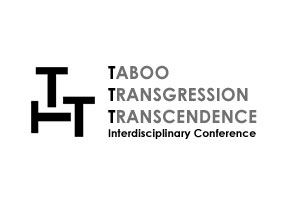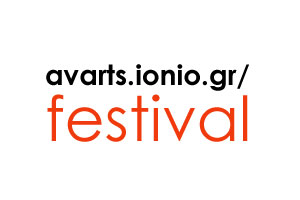Augmented Reality (AR) has transcended passive, screen-based engagement by increasingly integrating multisensorial interactions that facilitate active communication and embodied interaction with digital entities (Andreoli, 2015; Papadopoulos et al., 2016). This abstract explores the concept of "hybrid embodiment", a state characterized by the dissolution of boundaries - the liminal spaces where the tangible and virtual merge - giving rise to novel embodied experiences. Specifically, it investigates how Location-Based Video Games (LBGs), exemplified by "Monster Hunter Now", leverage AR to achieve an “existential diffusion” of digital entities into base reality. This diffusion denotes the process by which digital beings emerge from the ethereal realm of the virtual and become woven into the tapestry of lived experience within the physical world. This research suggests that “Monster Hunter Now” cultivates an emerging phygital reality (a perceptual environment where digital and physical elements are experienced as integrated rather than separate), thereby challenging conventional understandings of embodiment and presence.
This study employs an autoethnographic approach where the researchers themselves engaged as player-observers in "Monster Hunter Now", combining systematic gameplay documentation with reflexive analysis. Through structured play sessions across diverse environments, we documented our embodied experiences while analyzing the game's mechanics and design elements. This methodological approach draws on theories of ludic art (Vikhagen, 2019) and performative interaction (Lantz, 2023) to interpret firsthand experiences of hybrid embodiment in AR LBGs. Our analysis reveals three specific mechanisms through which digital monsters achieve “existential diffusion”: geographic anchoring, biome-based environmental mapping, and embodied player interaction.
The term “existential diffusion” describes these concepts, arguing that players' interaction with digital entities in AR LBGs transcends mere gameplay, evolving into a form of co-existence where the digital and physical realms are intertwined. The blending of semiotic layers mediates this co-existence, as articulated by O'Neill and Benyon (2015). The physical world, the mediating device, and the cultural context of digital content are all interpreted through the players' embodied experience, resulting in a unified, albeit hybrid, experiential space.
AR environments achieve immersion through tools designed to stimulate the human senses - vision, hearing, touch, etc. - and through the experience of feeling that “the (other) body is really “there” affecting overall subjective perception. This ontological shift, wherein digital and physical entities occupy the same experiential plane, carries profound implications for our comprehension of reality. “Monster Hunter Now” exemplifies existential diffusion by intricately interweaving the anatomical characteristics of digital monsters with real-world geographies as an extended feature of the feeling of presence. Players, assuming the role of hunters, track, engage in combat, and harvest resources from a diverse bestiary. Each monster possesses unique anatomical features - wings, tails, elemental abilities - that influence gameplay strategies within the players' digital environment, while the monster's geolocation affects the physical movement of the player in the hybrid game world. This integration of digital presence with real-world locations ultimately constructs a compelling phygital reality.
In addition, the video game utilizes location data to map different biomes - forest, swamp, desert, and tundra - onto the players' immediate surroundings, further amplifying the sense of immersion. The hunters' path through city streets is influenced by the qualities and properties of each biome and forms a liminal geography where the real and imagined converge. This existential diffusion in "Monster Hunter Now" creates a heightened sense of presence and blurs the boundaries between the real and virtual, leading to a "re-enchantment" of everyday environments. This "re-mystification" of the quotidian landscape, transfigured by the game's enchanted gaze, transforms mundane environments into sites of fantastical encounters.
Our embodied experience as researcher-players has been central to this analytical process. The physical navigation through real-world environments -capturing the quest for digital entities in physical space- grounded our understanding of how the game creates a liminal experience. Through systematic self-documentation of our sensory and cognitive responses during gameplay, we identified specific mechanisms through which digital overlays transform mundane spaces into sites of fantastical encounter. Our autoethnographic observations have been structured around three analytical dimensions: (1) bodily engagement with digital entities in physical space, (2) perceptual shifts between digital and physical attention, and (3) spatial reinterpretation through gameplay. These dimensions provided an operational framework for documenting how "existential diffusion" manifests in embodied experience. By systematically documenting how AR LBGs create a palimpsest where layers of physical and digital experience are inscribed upon each other, we provide both theoretical concepts and methodological approaches for analyzing the increasingly blurred boundaries between virtual and physical realities in contemporary media experiences.
The transformative power of AR LBGs is underscored to re-enchant our engagement with both digital and physical worlds, suggesting a future where the boundaries between the virtual and the real continue to erode, creating a palimpsest where layers of the physical and digital are inscribed upon each other repeatedly.
Magdalini Grigoriadou is a PhD architect (UPM, Spain, 2014) exploring the intersection of space, time, and the human body in architectural imagination. Her research investigates the impact of digital technologies on embodied experiences and the design of personalised and adaptable spaces. Through projects like "Sparágmata" (Mexico, 2017) "Disembody" (Greece, 2021) and "Hybrid Postbodies" (2022) she delves into themes of nostalgia, fragmentation, and the emergence of embodied hybrid digital-physical spaces. By employing virtual environments and performance, she challenges traditional notions of space and architecture, advocating for a more embodied, dynamic, and vibrant approach to spatial experience.
Back





